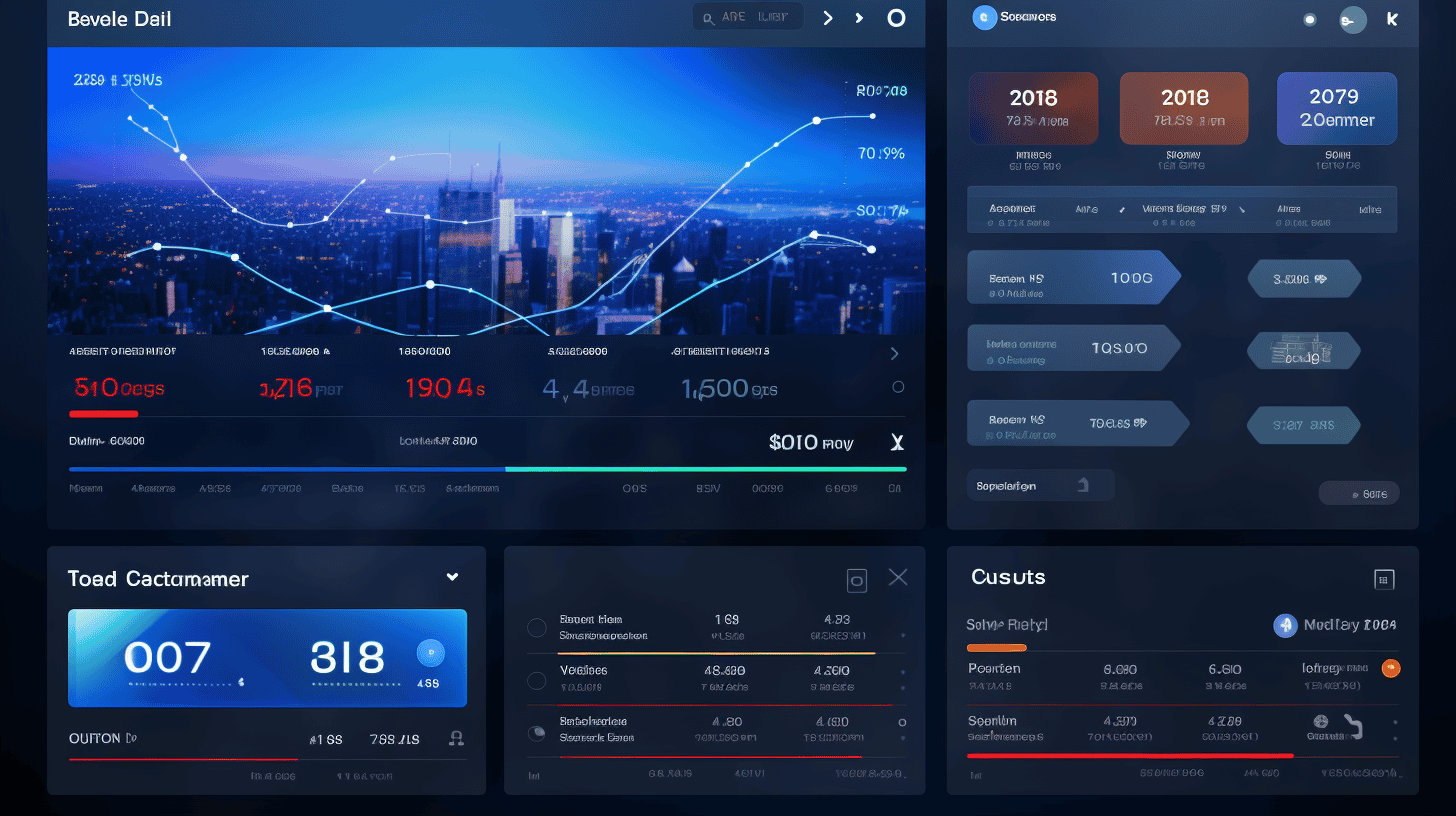WordPress 凭借其用户友好的界面和广泛的功能,已成为创建和管理网站的首选平台。然而,能力越大,责任越大,其中包括需要执行定期维护任务以保持 WordPress 网站平稳运行。
维护 WordPress 网站可能既耗时又繁琐,需要进行大量手动更新和安全检查。但不必担心!有一种解决方案可以简化和精简此过程 - 自动化。
近年来,WordPress 维护中的自动化获得了显著的发展,它提供了一系列好处,例如减少手动更新和提高整体生产力。本文将深入探讨自动化在 WordPress 维护中的作用、WordPress 维护的现状以及自动化维护工具的未来。那么,让我们深入研究一下自动化如何彻底改变您的 WordPress 维护程序,让您专注于真正重要的事情——创建精彩的内容并提升您的在线影响力!
自动化在 WordPress 维护中的作用
介绍
自动化正在彻底改变我们管理和维护 WordPress 网站的方式。随着 WordPress 更新的复杂性不断增加以及定期维护的需求,仅依靠手动流程可能会耗费大量时间,并且容易出现人为错误。这就是自动化发挥作用的地方,它为 WordPress 维护提供了一种更高效、更简化的方法。
在本文中,我们将探讨自动化在 WordPress 维护中的作用,特别关注自动更新和减少手动任务。我们将讨论在 WordPress 维护例程中实施自动化的好处,以及它如何帮助优化网站的整体性能。
自动更新
WordPress 维护的最重要方面之一是让您的网站保持最新软件版本、主题和插件。但是,手动更新每个元素可能是一项繁琐且耗时的任务。这时,自动更新就成为改变游戏规则的关键。
通过在 WordPress 维护例程中实现自动化,您可以确保您的网站保持更新,而无需不断进行手动干预。以下是使用自动更新的一些主要好处:
- 节省时间: 自动化消除了手动更新网站每个元素的需要,从而节省了您宝贵的时间,可以更好地利用在其他地方。
- 增强的安全性: 定期更新对于确保 WordPress 网站的安全至关重要。自动更新可确保您的网站始终配备最新的安全补丁并及时修复漏洞。
- 无缝兼容性: 自动更新可帮助确保您的网站的所有元素(包括主题和插件)与最新的 WordPress 版本兼容。这可降低发生冲突和潜在停机的风险。
- 安心: 通过自动化处理更新,您可以放心,您的网站始终是最新的并且运行最佳。
减少手动更新
除了自动更新之外,自动化在减少 WordPress 维护中涉及的手动任务方面也发挥着重要作用。让我们来看看自动化可以最大限度地减少人工工作的一些领域:
- 计划备份: 定期备份对于保护您网站的数据至关重要。借助自动化功能,您可以安排备份以指定的时间间隔自动运行,从而无需手动备份过程。
- 数据库优化: 维护优化的数据库对于 WordPress 网站的性能和速度至关重要。自动化可以处理数据库优化、清理不必要的数据和清除垃圾评论等任务,从而减少对手动数据库管理的需求。
- 安全监控: 掌握安全威胁对于保护您的 WordPress 网站至关重要。自动化可以帮助监控您的网站是否存在可疑活动、恶意软件和漏洞,提供实时警报并减少手动安全检查的需要。
总之,自动化正在通过简化和优化流程改变 WordPress 维护的格局。通过实施自动更新并减少手动任务,您可以节省时间、增强安全性、确保兼容性,并安心地知道您的网站得到了良好的维护。
如果您想了解有关如何通过自动化优化 WordPress 维护的更多信息,请查看 本文 在我们的网站上。
WordPress 维护的当前状态
WordPress 是一款流行的内容管理系统 (CMS),它彻底改变了网站的构建和管理方式。凭借其用户友好的界面和丰富的插件库,WordPress 已成为个人和企业的首选。然而,随着 WordPress 网站数量的不断增长,对有效维护策略的需求也在不断增加。
客户数量的变化
WordPress 维护提供商所服务的客户数量和规模发生了重大变化。早期,大多数客户都是小型企业或只有一个网站的个人。然而,随着 WordPress 越来越受欢迎,并成为大型企业的首选 CMS,维护提供商现在发现自己正在为各种各样的客户提供服务,从小型初创公司到跨国公司。这种转变反映了 WordPress 在整个商业领域的广泛采用。
WordPress 使用率上升
根据最近的统计数据,互联网上 45.8% 的网站都在使用 WordPress。这个数字充分说明了该平台在市场上的主导地位。从博主到电子商务巨头,各种规模的企业都依赖 WordPress 来增强其在线业务。WordPress 的使用率不断上升,这可以归因于其易用性、多功能性和广泛的社区支持。随着越来越多的企业认识到这个强大的 CMS 的好处,对 WordPress 维护服务的需求持续飙升。
自动化维护工具的作用
为了满足日益增长的 WordPress 维护需求,自动化工具应运而生。这些工具提供了一系列功能,可以高效处理日常维护任务,让开发人员和网站所有者有时间专注于更紧迫的问题。自动化维护工具的一些主要功能包括:
- 安全: 自动化工具会定期扫描网站中的漏洞、对 WordPress 核心、主题和插件进行更新,并在出现任何安全漏洞时提供实时警报。
- 性能优化: 这些工具通过缓存内容、压缩文件和优化图像来优化网站性能,从而加快加载时间并改善用户体验。
- 备份和恢复: 自动化工具会定期备份 WordPress 网站,并在出现数据丢失或网站问题时提供无缝恢复过程。
- 插件和主题管理: 这些工具通过监控过时或冲突的插件和主题、建议替换和处理更新来帮助管理插件和主题。
总之,WordPress 维护的现状特点是客户数量显著变化、WordPress 使用率上升以及自动化维护工具的作用。WordPress 作为 CMS 的日益普及导致对维护服务的需求增加,而这些服务正由自动化工具高效处理。随着企业继续依赖 WordPress 实现在线业务,优先考虑持续维护并确保其网站的顺利运行至关重要。要深入了解 WordPress 维护的现状,您可以查看这篇信息丰富的文章 托管 WP.
WordPress 所需的维护时间
在维护 WordPress 网站时,分配足够的时间进行定期更新、备份和故障排除非常重要。忽视维护任务可能会导致安全漏洞、性能问题甚至网站停机。那么,WordPress 网站每年需要多少维护时间?让我们探讨一下平均范围以及可能影响这些时间的因素。
根据现有数据,WordPress 网站所需的平均维护时间每年在 6.82 到 24.5 小时之间[1]。但需要注意的是,这个范围可能因多种因素而异,例如网站的复杂性、安装的插件和主题的数量、定制级别以及网站所有者的总体目标和要求。
为了让您更好地理解,以下是一些可能影响 WordPress 网站所需维护时间的因素:
- 网站大小和复杂程度: 拥有更多页面和功能的大型网站可能需要更多维护时间才能确保一切顺利运行。与拥有数百种产品的复杂电子商务网站相比,只有几页的简单博客可能需要更少的维护时间。
- 插件和主题的数量: 您安装的插件和主题越多,更新和故障排除所需的时间就越多。保持所有插件和主题为最新版本以确保兼容性和安全性非常重要。
- 定制和修改: 如果您的 WordPress 网站有大量自定义或修改,则可能需要额外的维护时间。自定义代码和修改有时会导致更新期间出现冲突或问题。
- 安全和备份措施: 定期更新安全插件、执行备份和实施其他安全措施可能会占用大量维护时间。然而,这些任务对于确保您的网站安全并免受潜在威胁至关重要。
- 内容管理: 如果您的网站需要频繁更新内容,例如发布博客文章或添加新产品,则您需要将内容管理时间作为整体维护时间的一部分。
通过考虑这些因素并定期投入时间进行必要的维护任务,您可以使您的 WordPress 网站保持良好状态并最大限度地降低技术问题和安全漏洞的风险。
请记住,最好制定备份计划,以防维护期间出现问题。定期备份网站文件和数据库从长远来看可以为您省去很多麻烦和停机时间。
总之,虽然 WordPress 网站所需的平均维护时间在每年 6.82 到 24.5 小时之间,但实际数量可能会因网站大小、复杂性、自定义和内容管理需求等因素而有所不同。分配必要的时间进行定期维护可以帮助确保您的 WordPress 网站运行顺畅、保持安全并提供出色的用户体验。
[1] 来源: WP Buffs – 每年需要花多少小时进行 WordPress 维护?
WordPress 维护的未来
介绍
WordPress 维护领域不断发展,新进展和技术不断塑造着网站管理方式。随着数字环境变得越来越复杂,网站所有者必须保持领先地位并采用先进的工具和技术来确保其 WordPress 网站的顺利运行和安全。
在本节中,我们将讨论 WordPress 维护的未来,并深入探讨高级工具在简化日常任务中的作用。我们还将强调定期维护任务在最大限度地提高网站性能和安全性方面的重要性。
先进工具的作用
随着技术的快速进步,WordPress 维护的未来在于自动化和使用高级工具,这些工具可以简化日常任务并增强整体网站管理流程。以下是高级工具改变 WordPress 维护的几个主要方式:
- 自动更新: 保持 WordPress 网站更新对于安全性和性能至关重要。高级工具可以自动执行更新过程,确保您的网站始终运行最新版本的 WordPress、主题和插件,而无需您手动启动更新。
- 安全扫描和漏洞检查: 网站安全是每个 WordPress 所有者的首要关注点。高级工具可以定期进行安全扫描和漏洞检查,以识别任何潜在威胁或弱点。通过主动解决这些问题,您可以加强网站的防御能力并保护其免受恶意攻击。
- 备份和恢复: 意外总是会发生,拥有可靠的备份解决方案对于保护您网站的数据至关重要。高级工具提供强大的备份和恢复功能,使您能够轻松创建网站文件和数据库的备份,并在发生任何意外事件时恢复它们。
- 性能优化: 网站速度和性能对用户体验和搜索引擎排名有重大影响。高级工具可以深入了解需要改进的领域(例如缓存、图像优化和代码优化),从而帮助优化网站的性能。
定期维护任务的重要性
定期的 WordPress 维护任务是网站健康安全的基础。忽视这些任务可能会导致潜在的漏洞、性能低下,甚至网站完全瘫痪。以下是定期维护至关重要的原因:
- 安全: 定期维护任务(例如更新 WordPress 核心、主题和插件以及实施安全措施)有助于保护您的网站免受安全漏洞和漏洞的侵害。它可确保您的网站始终使用最新的安全补丁,从而降低未经授权的访问和数据泄露的风险。
- 表现: 日常维护任务(例如优化网站数据库、清理不必要的文件和数据库以及最小化服务器负载)可以显著提高网站的性能。更快、更高效的网站意味着更好的用户体验和更高的搜索引擎排名。
- 正常运行时间: 定期维护任务还包括监控网站的正常运行时间并及时解决可能出现的任何问题。通过密切关注网站的可用性,您可以最大限度地减少停机时间并确保访问者始终可以访问您的网站。
总之,WordPress 维护的未来在于自动化和采用先进的工具,以简化日常任务并增强网站安全性和性能。通过利用这些工具并执行定期维护任务,您可以确保 WordPress 网站的长期成功和可持续性。
WordPress 自动化观点
自动化已成为我们生活中不可或缺的一部分,它简化和精简了各种任务。谈到日益流行的网站创建平台 WordPress,自动化引发了一系列观点。一些人称赞它是一种省时高效的解决方案,而另一些人则担心潜在的风险和失控。让我们深入探讨关于 WordPress 自动化的两个关键观点:对自动更新和多个站点的集中管理的分歧意见。
关于自动更新的意见分歧
自动更新可以自动安装最新版本的 WordPress、主题和插件,这一直是网站管理员和所有者争论的话题。以下是不同观点的细分:
- 自动更新的倡导者:大约 52% 的 WordPress 管理员和网站所有者赞成在更新方面实现自动化。他们的理由包括:
- 时间效率:手动更新每个网站组件可能非常耗时,尤其是对于管理多个网站的人来说。
- 增强安全性:通过自动更新,可以及时修补漏洞,最大限度地降低潜在安全漏洞的风险。
- 错误修复和功能更新:自动更新可确保网站不断更新最新功能和错误修复,从而提供最佳的用户体验。
- 谨慎行事:另一方面,有些人希望对自己的更新有更多的控制权,他们担心的问题包括:
- 兼容性问题:自动更新有时会导致插件、主题和 WordPress 核心之间的兼容性问题,从而导致功能或设计问题。
- 自定义和插件依赖项:具有大量定制或复杂插件依赖项的网站在自动更新后可能会遇到意外行为,需要手动干预。
- 更新前测试:手动更新允许网站管理员在升级之前彻底测试其网站的功能,从而降低出现错误或中断的风险。
虽然自动更新可以简化 WordPress 维护并增强安全性,但必须权衡其优势与潜在风险,并选择适合您特定网站需求的方法。
多个站点的集中管理
单独管理多个 WordPress 网站可能是一项艰巨的任务,需要花费时间和精力才能让它们顺利运行。这就是集中管理解决方案发挥作用的地方。以下是此类工具的优势和功能:
- 简化控制:通过集中管理工具,您可以在一个仪表板中鸟瞰所有 WordPress 网站,从而实现简化的管理和更新。
- 高效更新和备份:这些工具使您能够自动更新和备份所有网站,从而节省您的时间并确保网站性能的一致性。
- 增强安全性:集中式管理工具通常包括安全功能,例如恶意软件扫描和防火墙保护,为您的网站提供额外的防御层。
通过利用专为集中管理设计的插件和服务,网站所有者可以控制他们的 WordPress 生态系统并减轻单独管理多个网站的挑战。
总之,WordPress 中的自动化可能是一把双刃剑。虽然它可以节省时间并简化网站管理,但权衡其优势与潜在风险并决定自动化的哪些方面符合您的需求至关重要。无论是自动更新还是集中管理,在自动化和手动控制之间找到适当的平衡都将为无缝的 WordPress 体验铺平道路。
阅读有关有效 WordPress 管理的更多信息 在这里,.
简化 WordPress 维护的工具
维护 WordPress 网站似乎是一项永无止境的任务。从更新插件到备份网站,有很多事情需要跟踪。幸运的是,有几种工具可以简化流程并让您的生活更轻松。让我们来看看 WordPress 维护的两个基本工具:备份插件和安全扫描工具。
备份插件
定期备份 WordPress 网站对于保护数据和确保万一发生意外时有一份副本至关重要。幸运的是,有几种可靠的备份插件可让备份过程变得无缝。以下是一些常用的选项:
- UpdraftPlus:UpdraftPlus 拥有超过 300 万个活跃安装,是 WordPress 最受欢迎的备份插件之一。它允许您安排自动备份,将其存储在各种位置(例如 Dropbox 或 Google Drive),并且只需单击几下即可轻松恢复您的网站。
- VaultPress:VaultPress 由 WordPress.com 背后的公司 Automattic 开发,提供 WordPress 网站的实时自动备份。它不仅可以备份网站的数据,还可以扫描恶意软件和其他安全威胁。使用 VaultPress,您只需单击一下即可轻松将网站恢复到以前的版本。
- 备份伙伴:顾名思义,BackupBuddy 是一款可靠且全面的 WordPress 备份插件。它允许您安排定期备份、远程存储并轻松恢复您的网站。BackupBuddy 还提供迁移功能,可轻松将您的网站迁移到新主机。
这些备份插件让您高枕无忧,确保您的网站数据安全且易于恢复。通过自动执行备份过程,您可以专注于网站的其他方面,而不必担心丢失宝贵的内容。
安全扫描工具
WordPress 安全是重中之重,因为该平台是黑客和恶意攻击的常见目标。使用安全扫描工具可以帮助您识别漏洞并保护您的网站免受潜在威胁。以下是一些流行的 WordPress 安全扫描工具:
- 苏库里安全:Sucuri 是领先的网站安全服务提供商,其 WordPress 安全插件非常值得推荐。它提供多种功能,包括恶意软件扫描、黑名单监控和黑客入侵后的安全措施。Sucuri Security 可帮助您确保网站安全无虞。
- Wordfence:Wordfence 是另一个流行的 WordPress 安全插件。它包括强大的防火墙、恶意软件扫描程序和实时威胁防御源。Wordfence 还提供登录安全、双因素身份验证和阻止恶意 IP 地址等功能。使用 Wordfence,您可以保护您的网站免受已知和新兴威胁的侵害。
- iThemes 安全:iThemes Security 以前称为 Better WP Security,是一款全面的 WordPress 安全插件。它提供了 30 多种不同的方法来保护您的网站,包括恶意软件扫描、暴力破解保护和双因素身份验证。iThemes Security 提供了一个易于使用的界面,让初学者和高级用户都可以使用它。
通过利用这些安全扫描工具,您可以主动保护您的 WordPress 网站免受潜在漏洞和威胁。定期扫描您的网站以查找恶意软件并实施安全措施将有助于保护您的数据并维护您的在线状态的完整性。
总之,备份插件和安全扫描工具对于简化 WordPress 维护至关重要。借助可靠的备份插件,您可以轻松安排自动备份并轻松恢复您的网站。安全扫描工具有助于识别漏洞并保护您的网站免受潜在威胁。通过利用这些工具,您可以确保 WordPress 网站的安全和顺利运行。
结论
总之,自动化在简化 WordPress 维护和提高生产力方面起着至关重要的作用。借助自动更新和减少手动任务,网站所有者可以节省宝贵的时间和精力。WordPress 维护的当前状态表明客户数量发生了变化,WordPress 使用率有所上升,这使得自动化维护工具比以往任何时候都更加重要。
WordPress 维护的未来在于使用高级工具和定期执行维护任务。尽管对自动更新存在分歧,但许多专业人士认识到集中管理多个网站的好处。为了简化 WordPress 维护,有几种可用的工具,包括备份插件和安全扫描工具。通过实施这些工具,网站所有者可以增强其 WordPress 网站的安全性和效率。
请记住,维护 WordPress 网站是一个持续的过程,定期的维护任务对于实现最佳性能至关重要。探索 托管WP 获得高级管理的 WordPress 云托管平台,该平台提供专家支持、主动监控以及简化 WordPress 维护所需的所有工具。
常见问题
- 自动化工具如何简化 WordPress 维护?
自动化工具可以自动执行定期备份、软件更新、安全扫描、数据库优化和性能监控等任务,从而简化 WordPress 维护。这可以节省时间并确保您的网站保持最新和安全。
- 有哪些流行的 WordPress 维护自动化工具?
一些流行的 WordPress 维护自动化工具包括:1. ManageWP、2. iThemes Sync、3. InfiniteWP、4. MainWP 和 5. WP Buffs。这些工具提供集中网站管理、自动备份、插件/主题更新和安全检查等功能。
- 依靠自动化工具进行 WordPress 维护是否安全?
是的,只要您选择信誉良好且可靠的工具,就可以安全地依靠自动化工具进行 WordPress 维护。确保自动化工具具有良好的用户评价、定期更新并提供强大的安全措施来保护您的网站。
- 自动化工具可以完全取代手动的 WordPress 维护任务吗?
虽然自动化工具可以处理许多 WordPress 维护任务,但执行手动检查和监控仍然很重要。定期检查您的网站、执行内容更新和测试新功能不应完全自动化,以确保最佳用户体验。
- 自动化工具的设置和使用是否需要技术专业知识?
大多数用于 WordPress 维护的自动化工具都设计得易于使用,不需要广泛的技术专业知识。但是,某些高级功能可能需要技术知识。建议阅读工具的文档或在需要时寻求支持。



















